Behind every good story is a great deal of planning. The StoryMaps editorial team starts every project with a detailed project plan that includes the following items to set ourselves up for success.
- Establishing your purpose
- Developing an outline
- Knowing your role(s)
- Establishing a timeline
- Inventorying content and data
- Planning for promotion
Follow along to learn what goes into each piece of our project planning puzzle.
Establish your purpose
Your project plan should include basic information to establish the purpose of the project. What are you making and why? What’s the key message you’re trying to convey? These questions should be answered in your project description. When establishing the purpose, it’s also important that you know who your story is for; this is your primary audience. Is it intended for experts in the field or a class of elementary students? Lastly, you should also consider the scope of the project — what will and will not be included. For example, if you are writing a story about climate change, are you going to include impacts everywhere or just in a specific location?
Knowing exactly what you’re making ahead of time will keep the project moving forward.

Develop an outline
Before diving into the fun stuff, you should have a detailed outline of your story that might include notes about the types of images, graphics, or maps you hope to include. You could even go as far as to plan what type of block will be used in the StoryMaps builder (such as a swipe, image gallery, or sidecar) or what your estimated word count will be for each section. Make sure your outline reflects the purpose you established.
Here is a sample outline from a previously published StoryMap project. View the complete document here.
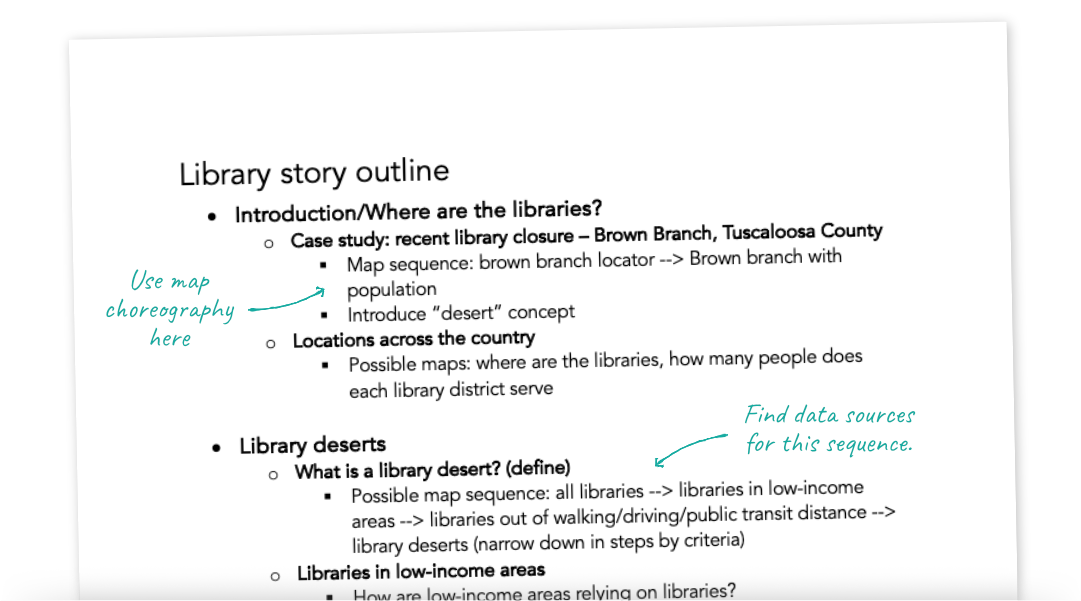

Know your role(s)
Assume every ArcGIS StoryMaps project needs the same roles: a writer/researcher, map maker, graphic designer, builder, editor, approver, and a “miscellaneous” person to write alternative text and/or seek permissions. If you’re the only person creating the story, you’ll fill all those roles! But perhaps you are lucky and have one person for each.
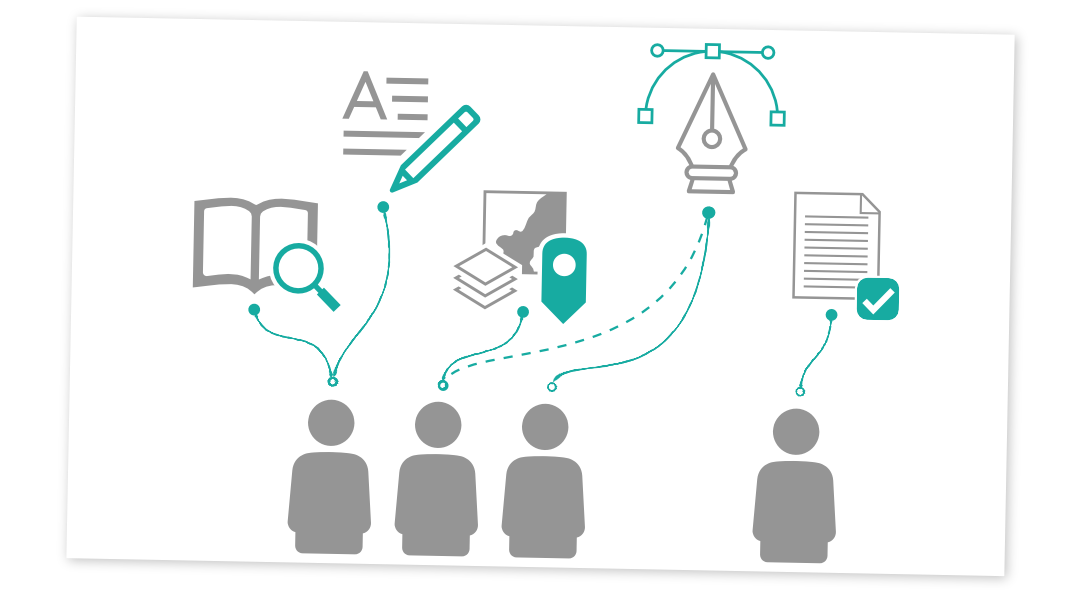
You can probably already see where these roles can overlap. It’s common for a project’s cartographer to also be the graphic designer and story builder. It’s also probable that the cartographer may be the one seeking data permissions.
The role of editor is a tricky one; it’s good to have someone on the immediate project team looking over the story and providing initial feedback. Our team refers to this person as our “editorial support.” However, it’s highly recommended that a final editor be from outside the team, so they can approach the story with fresh eyes.
An often-overlooked part of a project is considering who is responsible for approving your StoryMap. Does your organization have a communications or legal team that needs to read through your content? Make sure you know who needs to “sign off” before your project is public.
If you are in a small organization, it’s very common for one person to complete every part of the StoryMap; if this is the case, it’s even more important that you set yourself up successfully!

Establish a timeline
Several steps of the project process are tightly intertwined, so you may find yourself frequently updating your timeline. It’s important you do not give yourself or your team infinite time to complete a project, or you likely never will.
When determining a timeline, make sure it’s realistic. If your vision for your story involves a complex narrative, custom maps, and hand-drawn illustrations, two weeks is likely not long enough to complete it without an all-star team. Consider all the smaller tasks that come with the project and estimate the time it would take to complete each one. You should also give yourself a bit of extra time for finishing touches. Below is an example list of tasks for a standard StoryMap project our team might work on.
- research
- writing
- data collection & permissions
- maps & graphics
- story building
- editing
- promotional materials
- alternative text
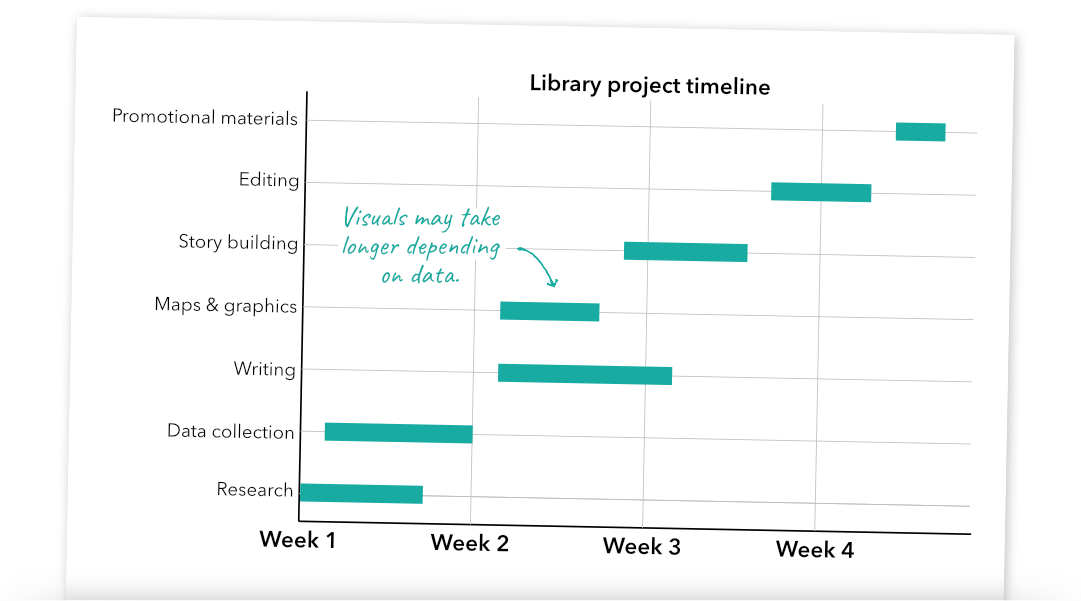
Another trick for deciding how long a project should take is to think backwards from a promotion date. When would you like your StoryMap out in the world? Is your story time-sensitive? A time-sensitive story may revolve around a particular event or holiday. For example, if I’m writing a story on a recent natural disaster, I wouldn’t want the story to be published the following month but rather the following week; in this instance, each of my story tasks (above) would need to be completed within a matter of days.

Inventory your content and data
Another important part of project planning is knowing what “stuff” you already have and what you need to acquire. This includes everything from research to data. Be sure to consider your project’s scope established in the beginning of the plan; distinguish between items that are essential for your story and ones that are simply nice to have. Here are some questions to ask yourself for this section of your plan.
- What kind of maps do you want in your story? Do they already exist, or do you need to do some spatial analyses?
- Do you have a dataset that meets your needs as well as permission to use it?
- Do you have sources to support the claims in your narrative?
- Does the story need photographs?
Our team breaks this down into “content” and “data” on our project plan, further separated by sections of “have” and “need.” Don’t forget to secure permission for anything you intend to use or make sure it has the correct license for your use case.

Plan for promotion
We write our stories for people to read them, so each story needs a promotion date, assets, and plan. For the beginning stages of a project, we only need to know what day our story will be promoted across our social channels and how we plan to share it. As mentioned above, this could impact your project’s timeline. For more information on successfully promoting your story, read section four of this blog.

Whether alone or working with a team, an ArcGIS StoryMaps project can quickly become overwhelming. Having a solid, detailed project plan in place before diving into the work can set you up for success. Our team is constantly improving our workflow and learning from our user community. Comment on this blog post if you have strategies for how you’ve set up your projects for success.

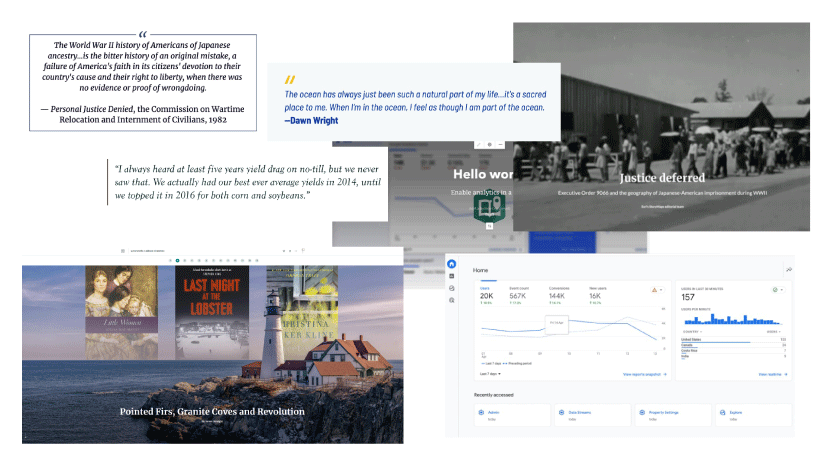
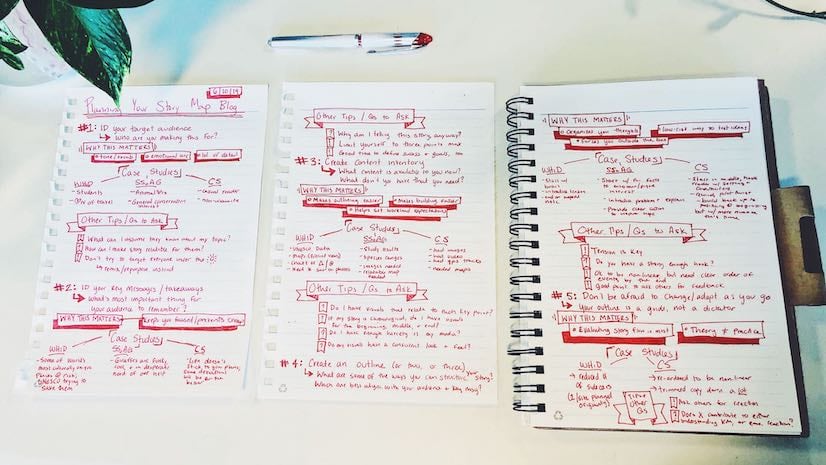
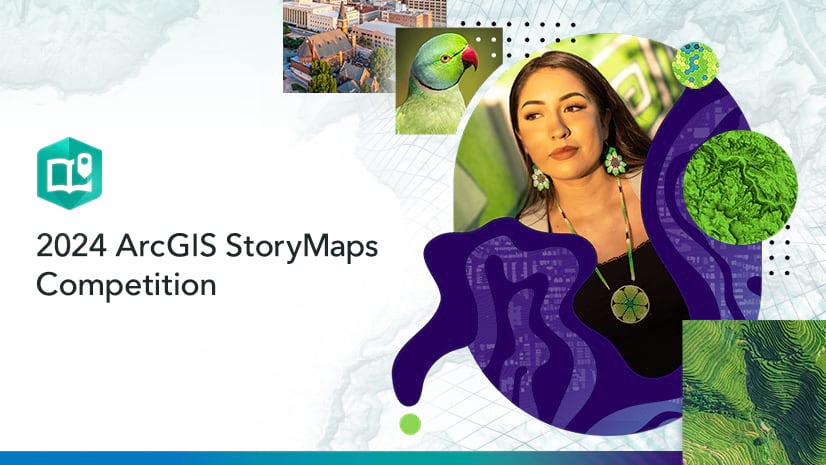
Article Discussion: